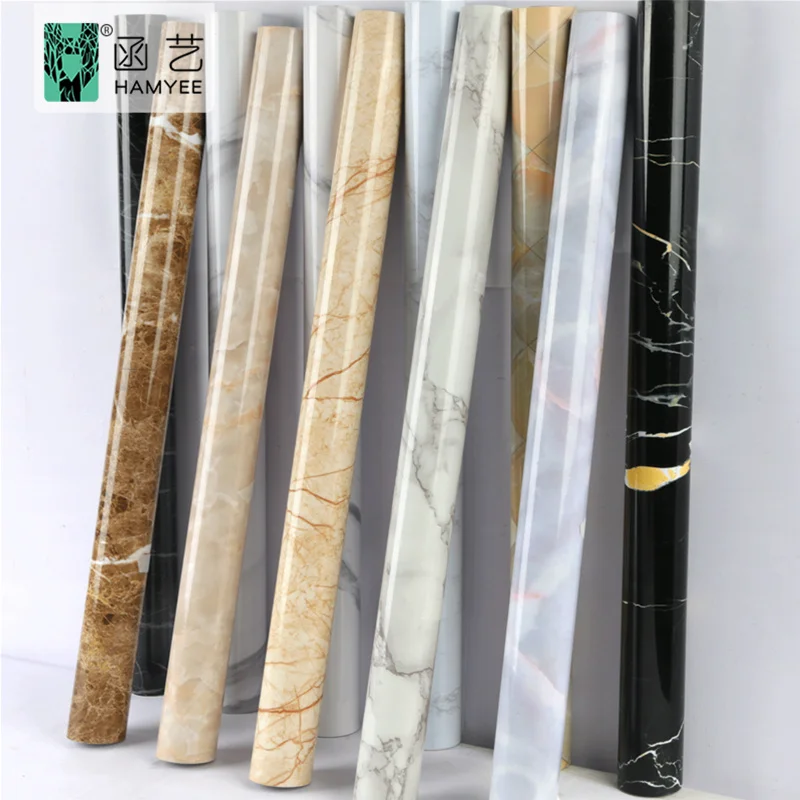But when it comes to wallpaper and updating your walls, you may run into trouble if those bumpy textures are present. But have no fear, there is a way to rock this out wonderfully! Given the right bumps or textures on your walls, this job can be very touch and go and should be carefully thought out. In some severe cases you might have to apply new drywall on the affected areas, followed by a textured wallpaper that is meant for sticking well. An alternate way may be just covering it with plaster or using compound/spackle and sanding down your walls so they are flat enough before adding anything else onto them! Or you can look for the unusual style of wallpapers that will match your present humps to generate an all-in-one stylish outcome.
Stell explains how to put up wallpaper seamlessly like the pros
Attaining a perfect wallpaper is one that appears seamless and flawless, may seem to be an easy job for the homeowners. Keep these tips in mind as you go through the process;
Clean Walls: Clean walls to remove all dust and debris. For very bumpy walls, a little special paste might be necessary to create the perfect flat surface. When applied, let it dry and then lightly sand to leave an even surface.
For best result, Primer: Use a top notch wallpaper best primer. Applying a coat of primer is important because it can help the adhesive better adhere to your wall, and will be much more likely to cover any small blemishes in texture.
THE PROPER ADHESIVE: Use a strong wallpaper paste, one sufficient enough to hold up against the additional force on account of textured surfaces. Because thicker pastes will be able to fill in gaps better and have more adhesion.
Carefully Measuring and Cutting the Wallpaper Strips Slightly Larger than Needed to Hide Minor Irregularities on Wall Surface for Perfect Fitting When applying the wallpaper, gently press it into texture patterns and avoid creating bubbles or wrinkles using a smoothing tool.
Precise Pattern Matching: It is not easy to match the patterns on wall textures and requires a lot of precision. You need to take special care when hanging the paper and be accurate in order for all patterns to align evenly, even on top of a wavy surface.
Prepping Up Your Walls for Wallpaper
Pre Application Note: Before you go about applying the wallpaper, it is extremely important to prep your walls properly for best results. This is the process you should be doing:
Examine the Wall Texture: Firstly, you need to check the texture of your walls whether or not they are fine for directly applying wallpaper on it otherwise if there needs some improvement.
If there are damage: Fill in any cracks or holes you see on the wall with spackle, and let them dry completely before sanding.
Cleaning : Clean the walls with wet cloth by rubbing carefully all leftovers of dirt or any thing which can prevent wallpaper to stuck properly.
Applying primer to the walls: Coat of one even layer will work, and you can apply it both on the texture minimal grooves. If you have very porous or heavily textured surfaces, it may require two coats for optimal performance.
How To Wallpaper An Uneven Wall
One of the most frequently asked question is whether or not wallpaper be applied on non-smooth walls. The answer is it can be done, but the key lies in a few factors such as how textured your walls are (there's different types of texture) whether or not you've prepped well before hanging wallpaper and what type of adhesive and/or wall paper yo use. In some cases, you can cover a wall that has intense textures with an undercoat of drywall compound before applying Venetian plaster; this method may produce less than ideal results. It should be noted that there is a possibility of texture, even though less prominent through the paper compared to painting directly onto textured walls and this is more visible when using thinner papers or lighter colours.
Selecting The Appropriate Wallpaper For Uneven Walls
With a textured wall, getting the right wallpaper is key to ensuring you get an appealing aesthetic. Click the options listed below:
Textured & Heavy Papered Wallpaper: If you choose to hang wallpaper in these rooms, a slightly textured paper can disguise minor or even moderate problem areas and give the walls added dimension.
Vinyl Coated Paper - This is a more durable and pliable type of wallpaper that goes easier on those uneven surfaces, easier to scrub - walls we're talking about here.
Non-Woven Wallpaper: Well known for its no-tear features and user-friendly attributes, the non-woven wallpaper can easily manage walls of light to medium texture such that it does not soak up too much adhesive.
Pattern concerns: Choosing large-scale or bold designs will mask minor textural inconsistencies better than intricate patterns.
So, to round this all off: wallpapering over textured walls is doable as long a title necessary instructions were taken with patience and the right materials selected. With careful wall prep, wallpaper selection and a few pro-tips to follow you can start on your way towards changing up the walls of your home with a beautiful new wallpaper that not only makes it look better than ever but combines potential stumbling blocks into creative design solutions!
Table of Contents
- Stell explains how to put up wallpaper seamlessly like the pros
- Prepping Up Your Walls for Wallpaper
- How To Wallpaper An Uneven Wall
- Selecting The Appropriate Wallpaper For Uneven Walls
- Pattern concerns: Choosing large-scale or bold designs will mask minor textural inconsistencies better than intricate patterns.

 EN
EN
 AR
AR
 HR
HR
 CS
CS
 DA
DA
 NL
NL
 FI
FI
 FR
FR
 DE
DE
 EL
EL
 IT
IT
 JA
JA
 KO
KO
 NO
NO
 PL
PL
 PT
PT
 RO
RO
 RU
RU
 ES
ES
 SV
SV
 IW
IW
 ID
ID
 LV
LV
 LT
LT
 SR
SR
 SK
SK
 SL
SL
 UK
UK
 SQ
SQ
 ET
ET
 HU
HU
 TH
TH
 TR
TR
 FA
FA
 AF
AF
 MK
MK
 KA
KA
 UR
UR
 BN
BN
